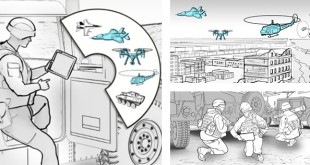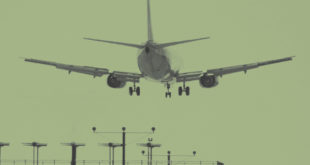Cities have become the new battleground and Hybrid or Urban Warfare the greatest threat being waged by ISIS to Boko Haram to Hamas to Ukraine rebels. Urban warfare is fundamentally unchanged since World War I in many regards: battle is human-centric, with most casualties resulting from discovering the enemy; a …
Read More »Growing threat of Cryptocurrency in terrorism for terror financing
Modern terrorist attacks display increasingly sophisticated ICT skills in both conducting their attacks and communicating them globally through digital technologies, combined with, in some cases, an awareness of counter-intelligence measures, largely enabled by Web 2.0. The Paris attackers displayed the most sophisticated use of these, including so-called Dark Web platforms …
Read More »Modernization of military intelligence spying and espionage
Intelligence, in military science, information concerning an enemy or an area. The term is also used for an agency that gathers such information. Military intelligence is as old as warfare itself. Even in biblical times, Moses sent spies to live with the Canaanites in order to learn about their ways and …
Read More »Media Manipulation strategies and techniques
Media manipulation is a series of related techniques in which partisans create an image or argument that favours their particular interests. Such tactics may include the use of logical fallacies, psychological manipulations, outright deception (disinformation), rhetorical and propaganda techniques, and often involve the suppression of information or points of view …
Read More »Security forces require throwable robots that can send video of inside buildings
Cities have become the new battleground and Hybrid or Urban Warfare the greatest threat being waged by ISIS to Boko Haram to Hamas to Ukraine rebels. The terrorists resort to Asymmetric Warfare exploiting the limitations and vulnerabilities of high-tech weapons and platforms, with relatively simple, low-cost countermeasures, tactics, and solutions. …
Read More »Pollution control strategies and technologies to fight growing menace of pollution deaths
Atmospheric pollution is a growing problem, particularly in urban areas and in less developed countries. With half the world has no access to clean fuels or technologies (e.g. stoves, lamps), the very air we breathe is growing dangerously polluted. More than 8 million people around the world die each year …
Read More »DARPA SIGMA+ using advanced intelligence analytics to detect chemical, biological, and explosives threats
Since the invention of nuclear power, there have been numerous “accidents.” From Three Mile Island and Chernobyl to the more recent problems in Fukushima, it would seem nuclear power is not fully under our control. Recently a Chinese scientist has warned that the single mountain under which North Korea most …
Read More »Crime reduction, prevention and response is being bolstered though 5G, data analytics and AI tools
Criminal activity continues to be a major concern in modern civilisations, with most nations facing unacceptable levels of crime and delinquency. The results show that African and Latin American countries suffer from the highest levels of various types of crime across the board, followed by countries in Asia. European, North American …
Read More »Chemical/Biological Threat to Air Transportation
Historically, most terrorist attacks on civilian targets have involved the use of firearms or explosives, and current defensive strategies are aimed at preventing attacks perpetrated by such means. However, the use of the nerve agent sarin in 1995 to attack the Tokyo subway system, the use of the U.S. mail …
Read More »DARPA MICE will quantify how authoritarian regimes control information
Authoritarianism is a form of government characterized by the rejection of political plurality, the use of strong central power to preserve the political status quo, and reductions in the rule of law, separation of powers, and democratic voting. Authoritarian states might contain nominally democratic institutions such as political parties, legislatures, …
Read More » International Defense Security & Technology Your trusted Source for News, Research and Analysis
International Defense Security & Technology Your trusted Source for News, Research and Analysis









